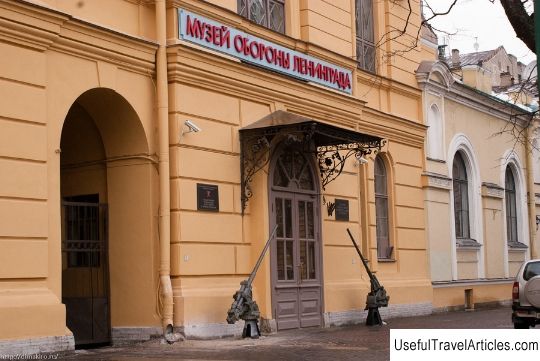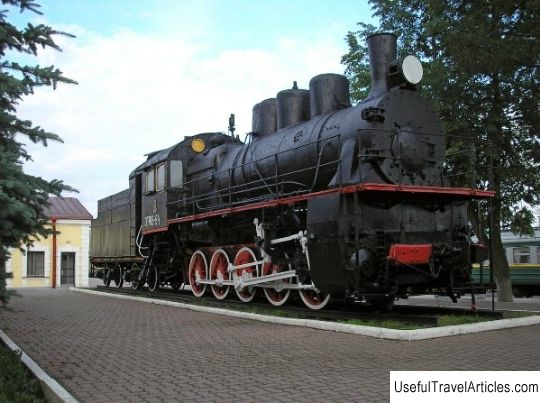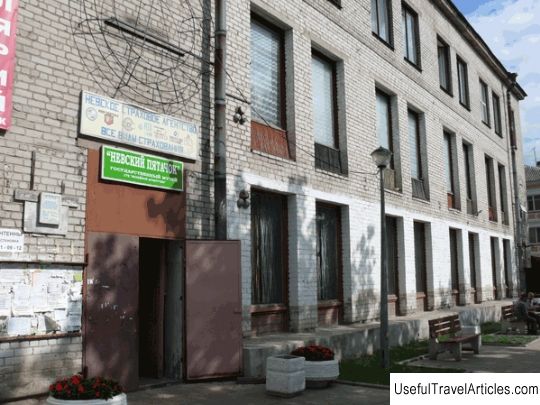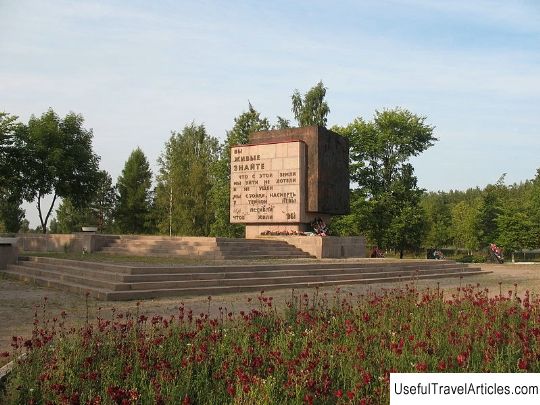Museum-diorama ”Breaking the Siege of Leningrad” description and photo - Russia - Leningrad region: Shlisselburg
Rating: 7,5/10 (2133 votes) 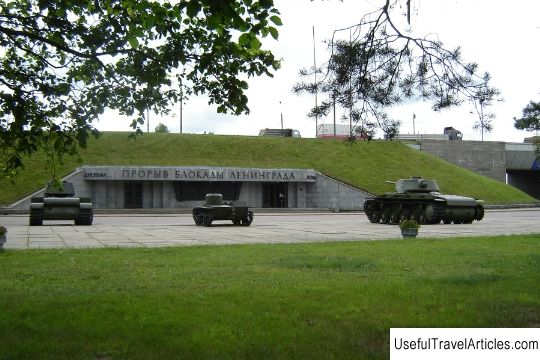
Museum-diorama “Breaking the Siege of Leningrad” description and photo - Russia - Leningrad Region: Shlisselburg. Detailed information about the attraction. Description, photos and a map showing the nearest significant objects. Photo and descriptionThe Museum "Breaking the Siege of Leningrad" was opened on May 7, 1985. It is a diorama dedicated to the turning point in the battle for Leningrad - Operation Iskra. For more than three years, Leningrad artists - K.G. Molteninov, Yu.A. Garikov, B.V. Kotik, N.M. Kutuzov, L.V. Kabachek, V.I. Seleznev, F.V. Savostyanov worked on the creation of a documentary canvas. The subject plan was completed by a group of model designers (supervisor V.D. Zaitsev). Many of the authors of the canvas took part in the defense of Leningrad themselves. The events of the week of bloody and fierce battles, which lasted from January 12 to 18, 1943, were first embodied in a multifaceted canvas measuring 40 x 8 x 6 m. The general idea of the operation was to ensure that using the counter-strikes of two fronts - Volkhov and Leningrad from the east and west, respectively - to break the group of fascist troops that held the Shlisselburg-Sinyavinsky ledge. The fronts were commanded by Lieutenant General L.A. Govorov and General of the Army K.A. Meretskov. Marshal K.E. Voroshilov and General of the Army G.K. Zhukov. The panorama of the ledge opens from the observation deck. Its depth does not exceed 16 km. Having visited the museum, you find yourself in the very center of events: on the right bank of the Neva. It is from here that on January 12, 1943, the 67th Army of the Leningrad Front under the command of General M.P. Dukhanova went on the offensive. The 2nd Shock and 8th Armies of the Volkhov Front, headed by Generals V.Z. Romanovsky and F.N. Old men, respectively. In the foreground, on the left side of the diorama, the events of the first hours of the battle are presented, when the artillery preparation begins, and the brass band escorts the first echelon of rifle divisions into battle. On the left flank is Shlisselburg, engulfed in fire. In heavy battles for his liberation, in addition to battalions of the 86th Infantry Division under the command of V.A. Trubachev, defenders of "Oreshk" also took part. In the center of the diorama - on the main attack - in the area of the village of Maryino, units of the 136th rifle division under the command of N.P. Simonyak is crossing the Neva. It also depicts the events of the third day of the operation, when the 220th and 152nd tank brigades were crossing the river by crossings made of wood and ice. The Ladoga Bridge was built on the site of the main crossing, and a diorama museum is located in its left-bank ramp. In the north of the second Workers' town (today the city of Kirovsk), on the right flank of the offensive, the 268th Infantry Division under the command of Colonel S.N. Borshcheva. In the background you can see the famous "Nevsky Piglet" - from there the regiments of the 45th Guards Division under the command of General A.A. Krasnov, they make constant attempts to storm the 8th state district power station. In the background in the center of the diorama is the scene of the meeting of the shock groups of the Leningrad and Volkhov fronts, which took place on January 18, 1943 in the First and Fifth Workers' villages. The blockade was finally broken. On the territory liberated from the invaders, the Polyana-Shlisselburg railway with a bridge across the Neva was built. "Victory Road" (as the people called it) made it possible to accumulate strength for the subsequent liberation of the Leningrad land from the fascist invaders in the January days of 1944. The uniqueness and originality of the first Leningrad diorama is that it reflects the events of all seven days of breaking the blockade at the same time. The special depth of the image space enables the viewer to follow the events taking place along the entire breakthrough line. The subject plan, which fills six meters in depth from the observation deck to the pictorial image, enhances the "effect of presence." A group of model designers reproduced the real terrain, which was pitted with bomb craters and shells, fragments of engineering structures were made in full size. Before creating a museum, painstaking research archival work was carried out. To recreate the overall picture of the battle, photographic and film documents were used, as well as the memories of the participants in those events. Great help was provided by scientific consultants: candidate of historical sciences V.P. Zaitsev, participants in the breakthrough of the blockade by retired colonels D.K. Zherebov and I.I. Solomakhin.             We also recommend reading Plain of Jars description and photos - Laos: Xieng Khouang Topic: Museum-diorama ”Breaking the Siege of Leningrad” description and photo - Russia - Leningrad region: Shlisselburg. |

